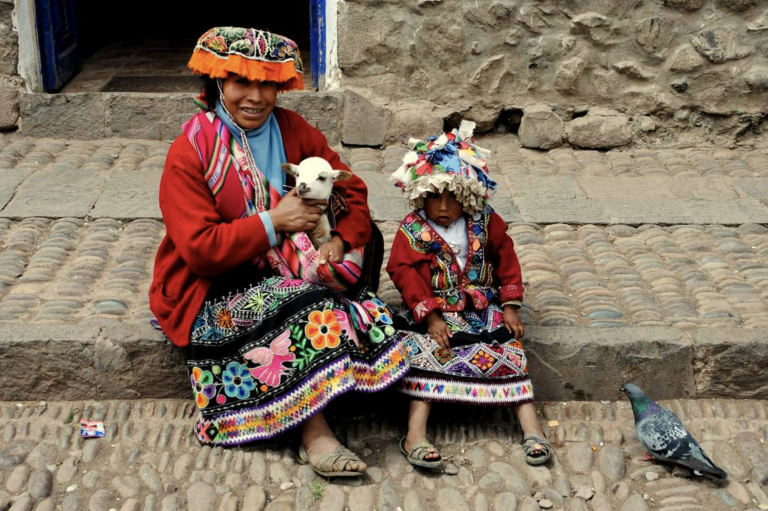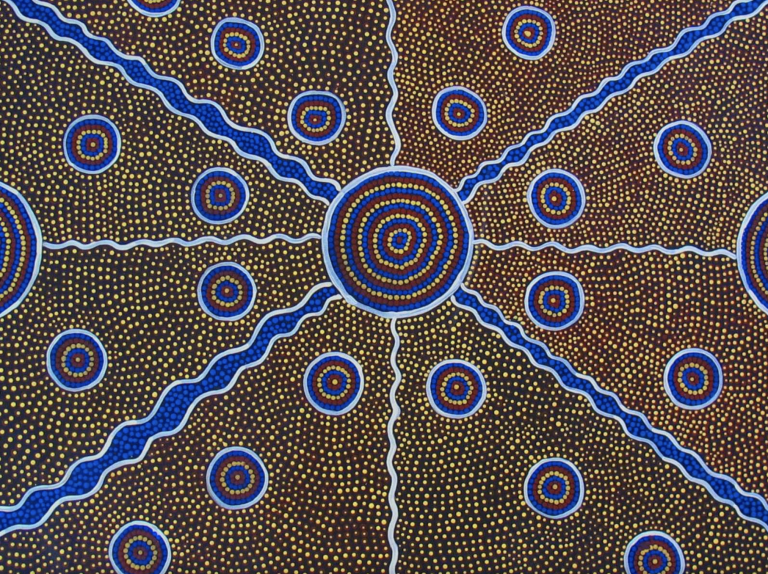What Is NAIDOC Week? Celebrating the History, Culture and Achievements of Aboriginal and Torres Strait Islander Peoples
Aboriginal Australians are here to stay. Nearly 800,000 Australians identify themselves as Aboriginal and/or Torres Strait Islander people. That’s more than three percent of the population.
Indigenous Australians have a rich array of histories, cultures, and beliefs. To celebrate their diversity and ingenuity, the nation commemorates NAIDOC Week.
What occurs during NAIDOC Week, and where did it come from? What are some ways you can learn about Aboriginal cultures? How should you celebrate it?
Answer these questions and you can hone your knowledge of Australia’s Indigenous peoples. Here is your comprehensive guide.
What Is NAIDOC Week?
NAIDOC Week is a seven-day celebration of Aboriginal and Torres Strait Islander peoples. It occurs between 4 July and 11 July this year.
It takes place across the country, including in areas with low Aboriginal populations. Everyone is encouraged to celebrate.
NAIDOC stands for the National Aborigines and Islanders Day Observance Committee. The Committee was a group of activists who organized to commemorate Indigenous issues. The National NAIDOC Committee now organizes the events.
The History of NAIDOC Week
NAIDOC Week began with Aboriginal rights groups in the 1920s. They began protesting Australia Day because of the continued discrimination Aboriginal people face.
These initial protests led to the creation of the Day of Mourning in 1938. Protesters marched through Sydney and convened at the Australian Hall. They passed a resolution demanding that the government commit to full equality for Aboriginal people.
Protests continued every 26 January, though they did not receive extensive media coverage. Activists then decided to create Aborigines Day, publicizing the history and culture of Aboriginal people. The first Aborigines Day was held in July 1955.
It helped draw the nation’s attention. Church groups and politicians began calling for the creation of a committee to organize commemorative events. The National Aborigines Day Observance Committee (NADOC) soon formed.
In 1967, a referendum passed to allow Aboriginal people to be counted in censuses. In order to represent Aboriginal people in legislation, the Department of Aboriginal Affairs was formed in 1972.
NADOC attempted to make National Aborigines Day a national public holiday. Their activism was unsuccessful, but it encouraged people to think about Aboriginal commemorations.
Torres Strait Islander peoples began to organize as well. Over the 1980s and 1990s, they joined with Aboriginal activists. NADOC renamed itself to become NAIDOC, including Islanders.
NAIDOC scheduled Aborigines Day for many different occasions. They eventually decided to schedule it for the first Sunday in July.
As time went on, events took place over multiple days. By the 1990s, an entire week celebrating Aboriginal life has formed. It was labelled NAIDOC Week during the 1990s.
NAIDOC Week Events
One of the leading NAIDOC Week events is the National NAIDOC Awards Ceremony. Indigenous people from all across the country can receive awards for political activism, art, and athletic performance. The ceremony is televised so all can view it.
Each ceremony is held in a different location. For 2021, Mparntwe (Alice Springs) is the host.
The host city holds several events of its own. The National NAIDOC Committee works with local groups so they can show off their culture and history at the award ceremony gala.
Any community can host its own event. Many like to hold art exhibitions, showcasing the works of Indigenous artists. Others like to hold talks, educating locals on important issues.
Family is very important to NAIDOC events. Some events allow children to make art alongside Aboriginal elders. Others allow them to listen to stories and family histories.
You can find events on a Torres Strait island as well. You can attend art shows and musical performances and experience the distinct cultures of the Torres Strait.
Heal Country
Each NAIDOC week has its own theme. This year’s theme is “Heal Country.”
A country has kinship, traditions, and culture. But it also has inequalities and injustice.
The National NAIDOC Committee wants to call Australia’s attention to the unity of Aboriginal peoples. Their cultures are resilient, and their forms of leadership are sustainable.
Yet that can only be the case if actions are taken to protect the country. Aboriginal sacred sites must be preserved. Land and water resources must be protected from climate change and industrialization.
To support the theme, events have an educational focus. News stations and schools have prepared lesson guides for students and teachers.
How to Celebrate NAIDOC Week
There are several ways that you can start celebrating NAIDOC Week. Try to find a few different ways to celebrate. The more you find, the more you can express the rich diversity of Aboriginal cultures.
Educate Yourself on Aboriginal Issues
View the lesson guides that educational organizations have prepared. Many news stations also like to run stories on Aboriginal peoples during the week. You can find stories in all sections of your newspapers, especially in the arts sections.
Study the history of Aboriginal people in Australia. Start with the pre-invasion history and move forward through time.
Then examine how the Europeans affected Indigenous cultures. Learn about the Australian frontier wars and the Stolen Generations.
Learn about how Aboriginals live and commemorate their cultures today. Remember that Aboriginal Australians remain a vital part of Australia. They have not faded away, and they help shape the country today.
It can be a little overwhelming to read about Aboriginal politics. Break things down into a few main categories. Study the environment, discrimination, and medical issues.
You can also read about the experiences of Indigenous peoples in other parts of the world. Some Aboriginal activists try to organize on an international level. But keep in mind that the experience of each Indigenous people is different.
Engage in Culture
Art festivals and story readings are two terrific opportunities to learn about Aboriginal culture. If you find a good work of art, buy it. This puts money in the hands of Aboriginal community members and gives you a chance to study the work at home.
Many festivals also commemorate dance and music. You can participate, or you can sit back and observe. You may be able to buy albums from your favourite artists.
The Dreaming refers to Aboriginal religious practices. Each people has their own Dreaming, so take some time to learn about them.
If you want to stay at home, you can try cooking Aboriginal recipes. Many newspapers publish recipes during NAIDOC Week.
Study Aboriginal Sites
If you live near an Aboriginal religious site, go and visit it. You can take a guided tour, or you can view it from a distance.
If leaving your house is not an option, you can take a virtual tour online. Some communities have websites with photographs of the sacred sites near them.
Notable sites include Uluru-Kata Tjuta, National Park. You can go for a walk through the park and speak to Anangu rangers.
Keep in mind that these sites are extremely important to Aboriginal people. Most do not allow camping or littering.
Be polite and follow the instructions of rangers and Indigenous guests. You can participate in a religious ceremony if you are asked to. But do not interfere with one in progress.
Volunteer in Aboriginal Communities
If you have some free time, take NAIDOC Week as an opportunity to volunteer in a community. Talk to an Elder or Aboriginal leader and see what you can do.
Some communities have community centres. You can help teach classes or tend to the grounds.
Other communities offer activist groups. You can join, donate money, or attend rallies.
Focus on reconciliation, strengthening relationships between Indigenous and non-Indigenous peoples. Engage in a conversation between yourself and the Indigenous people you are working with.
If you are a Muslim, you can refer to the bond between Indigenous Australians and Islam. You can talk about how Muslims and Aboriginal people have faced discrimination.
But take more time to listen than to speak. Hear other people’s stories and ask questions when appropriate.
Participate Year-Round
NAIDOC Week is intended to be just one occasion to commemorate Aboriginal Australians. Take it as an opportunity to celebrate other events.
The Day of Mourning is still held on 26 January. You can find protests in different cities across the country.
Harmony Day is celebrated on 21 March. It is Australia’s celebration of the International Day for the Elimination of Racial Discrimination. Consider what you can do to fight racism and learn about discrimination.
National Sorry Day occurs on 26 May. It recognizes the discrimination that Aboriginal and Torres Strait Islander peoples have faced. It provides an opportunity for reconciliation and investment in Aboriginal communities.
Mabo Day takes place on 3 June. The occasion recognizes the work of Eddie Koiki Mabo, an activist who fought for the right of Indigenous people to own land.
Coming of the Light takes place on 1 July. It commemorates the introduction of Christianity to the Torres Strait. Events take place on many islands and throughout Queensland.
Appreciate Australia’s Diversity
NAIDOC Week is coming up. It developed out of decades of political activism from Aboriginal and Torres Strait Islander people. It is seven days of art festivals, award ceremonies, and educational talks.
Celebrate it in a few different ways. Commemorate this year’s theme by studying national issues. Learn about land conservation and religious sites.
Use this week as a chance to further your reconciliation. Volunteer in communities and fight racism wherever you see it.
Work with organizations that affirm Indigenous communities. Crescent Wealth serves Indigenous Australians across the country. Contact us today.
Share this
You May Also Like
These Related Stories

What Is International Day of the World’s Indigenous Peoples?

A Guide on United Nations Declaration (UNDRIP) on the Rights of Indigenous Peoples


